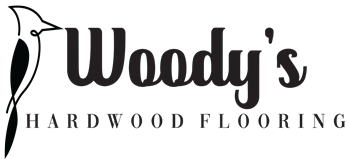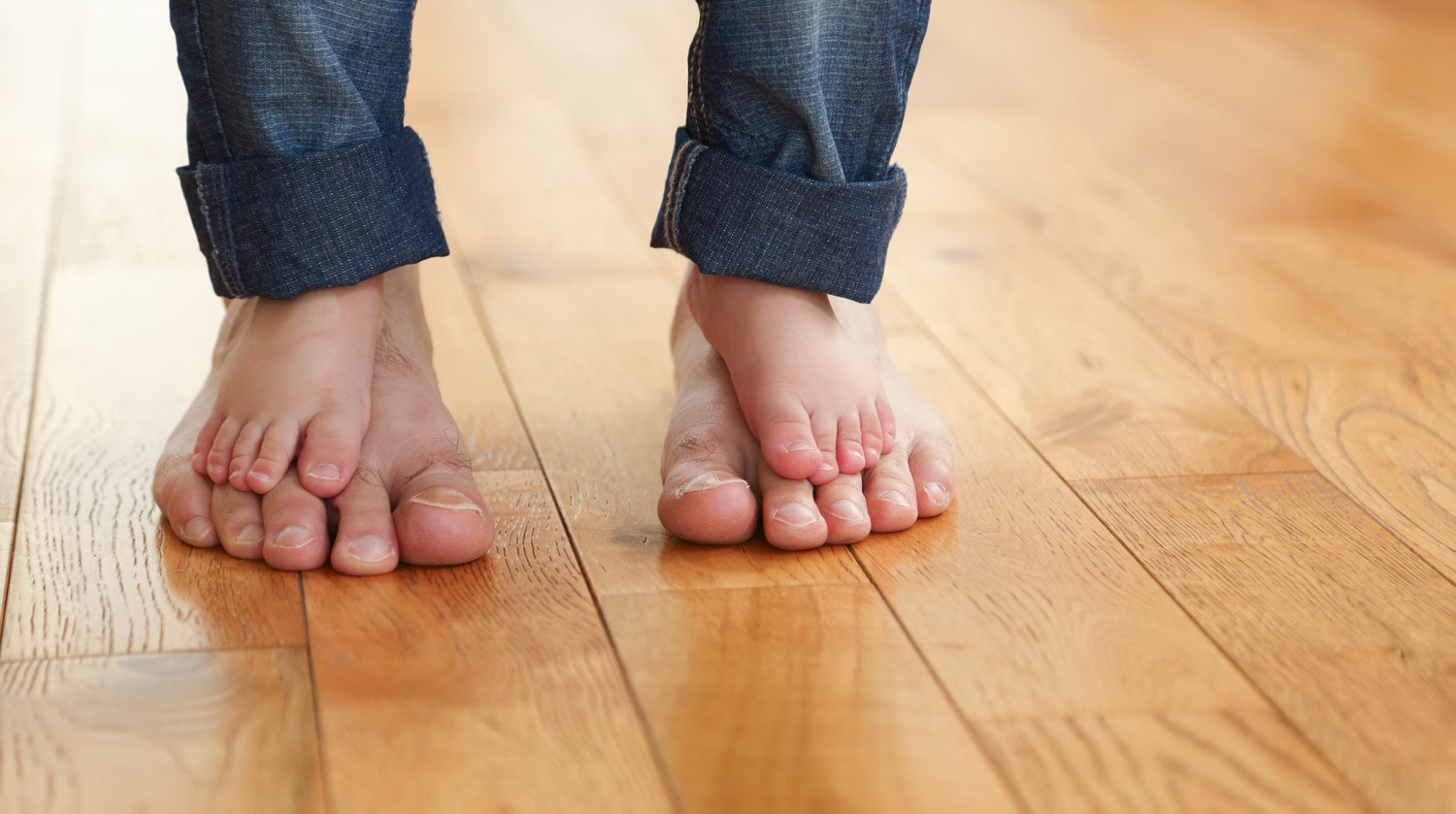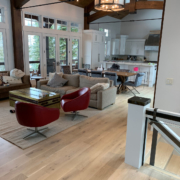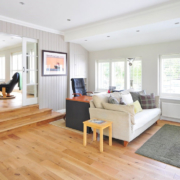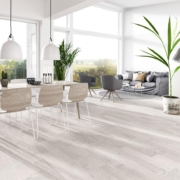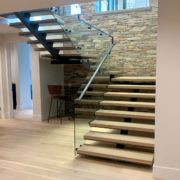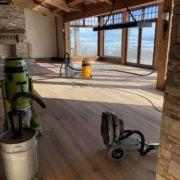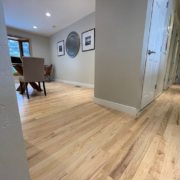Are You Concerned About Cracks and Separation Between Hardwood Floor Boards?
Cracks & Separations Happen to All Hardwood Floors
Every hardwood floor endures some separation between boards. In the winter months when the home is heated and the air is dry, wood flooring releases some of its moisture and therefore shrinks. When this happens, thin cracks appear between boards. This is normal and is acceptable. Hardwood flooring is designed and installed to handle this type of movement.
Cracks and separations can be alarming to the proud owner of a new hardwood floor, especially when it looks nearly flawless in the summertime, when by winter some noticeable cracking and separating of the floor boards appear. In some cases, these changes in the floor don’t occur until years after installation.
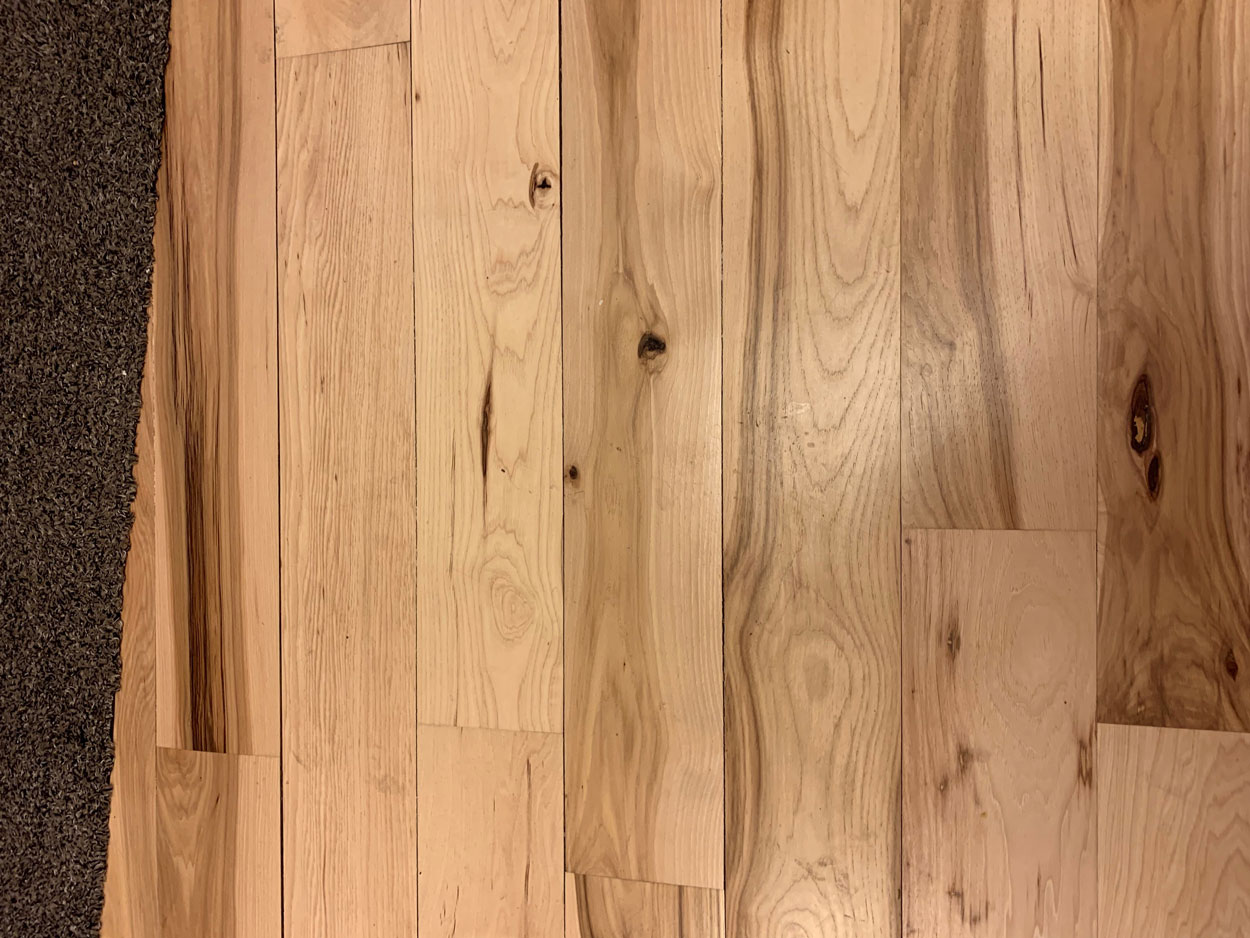
Homeowners should not call their hardwood installers at the first sign of cracks. Cracks that developed during the winter months may easily reach the thickness of a dime or a quarter. Generally speaking, wider boards will show more gapping than narrow boards. Lighter colored flooring material such as maple or floors with a lighter stain tend to show cracks and separation more than darker wood tones and stain colors.
Remember, Utah has a dry climate, which is classed as semi-arid to desert, in spite of its variety of smaller climates found among its varying terrain, from Salt Lake to the peaks of the Uinta Mountains, not to mention that it also lies in the path of monsoon precipitation from the Gulf of California in the summer months and is subject to unique temperature inversions across its valleys that can last for weeks.
How to Help Prevent Cracks and Separations in your Hardwood Floor
Homeowners should add moisture to the air during dry periods. It is the homeowner’s choice and responsibility to maintain humidity levels. Homeowners can either live with the cracks and separation or install a whole home humidification system to minimize this natural adjustment in their flooring.
To Humidify or Dehumidify, that is the Question
By stabilising your home’s relative humidity year-round, you can help lessen the number of cracks and separations that naturally occur. You can do this by using a humidifier in the winter months and exhaust fans and dehumidifiers in the case of too much moisture in the summertime. The best time to determine your home’s humidity levels with respect to your hardwood floors is when you are having them installed.
What is the ideal humidity level for your Utah home if you have hardwood floors?
Having a balanced level of humidity in your Utah home is good for you, your family, your pets and plants…and your hardwood floors! It is recommended to keep your home’s humidity between 35% to 55%. If your home’s humidity drops below 35%, then it increases the likelihood of the floor cracking and separating. An ideal room temperature for flooring is between 60 degrees to 80 degrees Fahrenheit. You can also look to purchase a “wood moisture meter” that can help you determine the ongoing fluctuations in relative humidity in your home throughout the year.
When Woody’s Hardwood Flooring installers assess an installation, we use a variety of tools that help with the process, such as this “pinless moisture meter” (on left) and a smaller one to test temperature and relative humidity (on right).
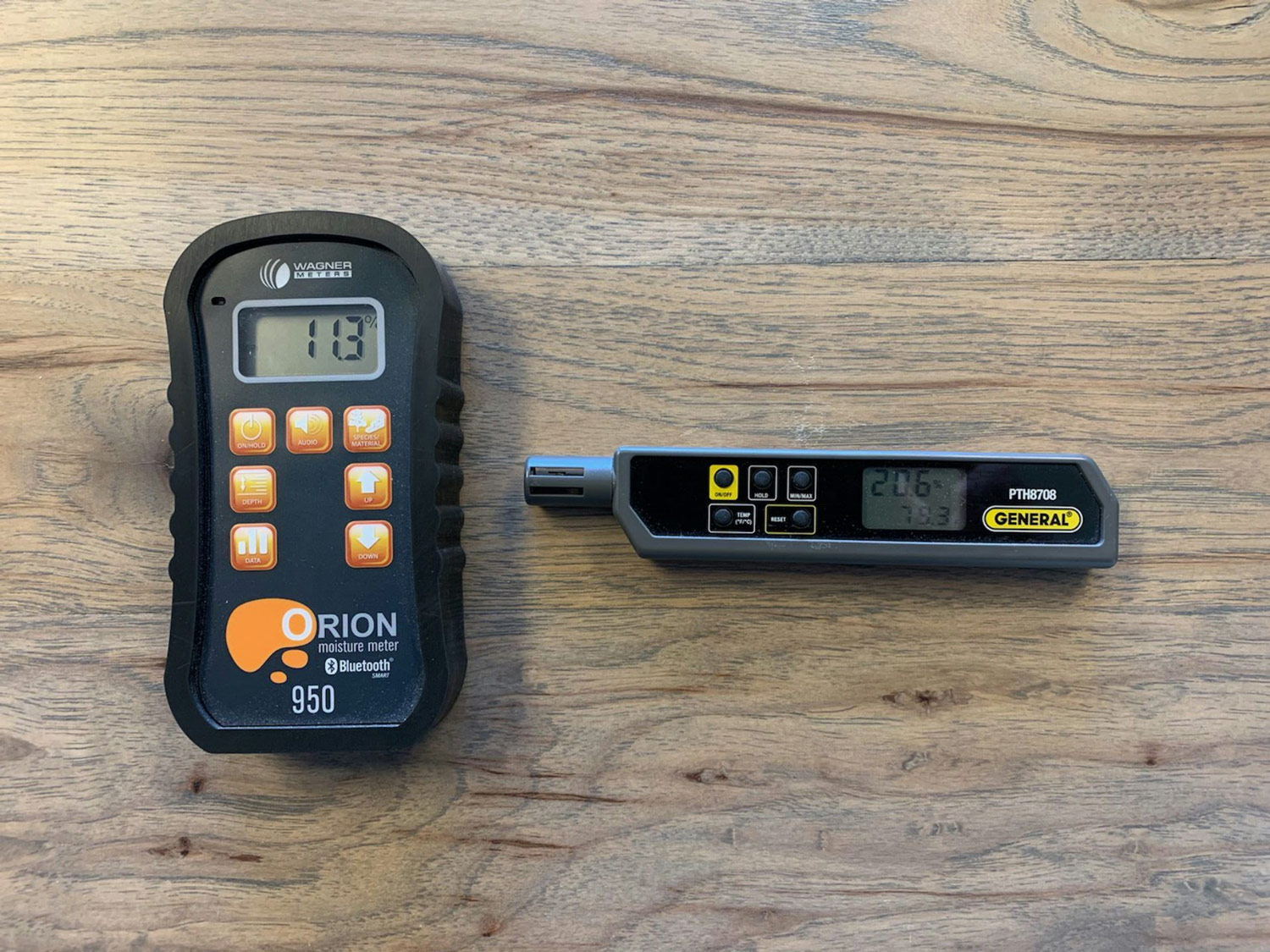
Hardwood Floor Cupping, Crowning and Buckling
Cupping can be caused by water being spilled onto a hardwood floor, or from having too high of a relative humidity in your home. The floor boards curve in a concave fashion.
Crowning is similar to cupping in how it is formed, however, the floor boards instead form a convex curve. This can again occur when the floor is exposed to water or high humidity for long periods of time. The saturation of moisture causes the crowning effect.
Buckling is one of the most extreme issues with moisture and humidity in your hardwood floor. It occurs when the floor actually separates from the subfloor, noticeably lifting up to a few inches in one or more places in your home. Thankfully, this issue is quite rare and is often a result of more extreme circumstances such as flooding over a longer time period.
Make sure you first fix the imbalance in your moisture/humidity levels to allow the floor boards to dry and find a neutral, balanced state of humidity and moisture levels within. This way, any sanding or restoration efforts will be most effective for the long-term.
Here is a good summary from the NWFA regarding cupping and crowning:
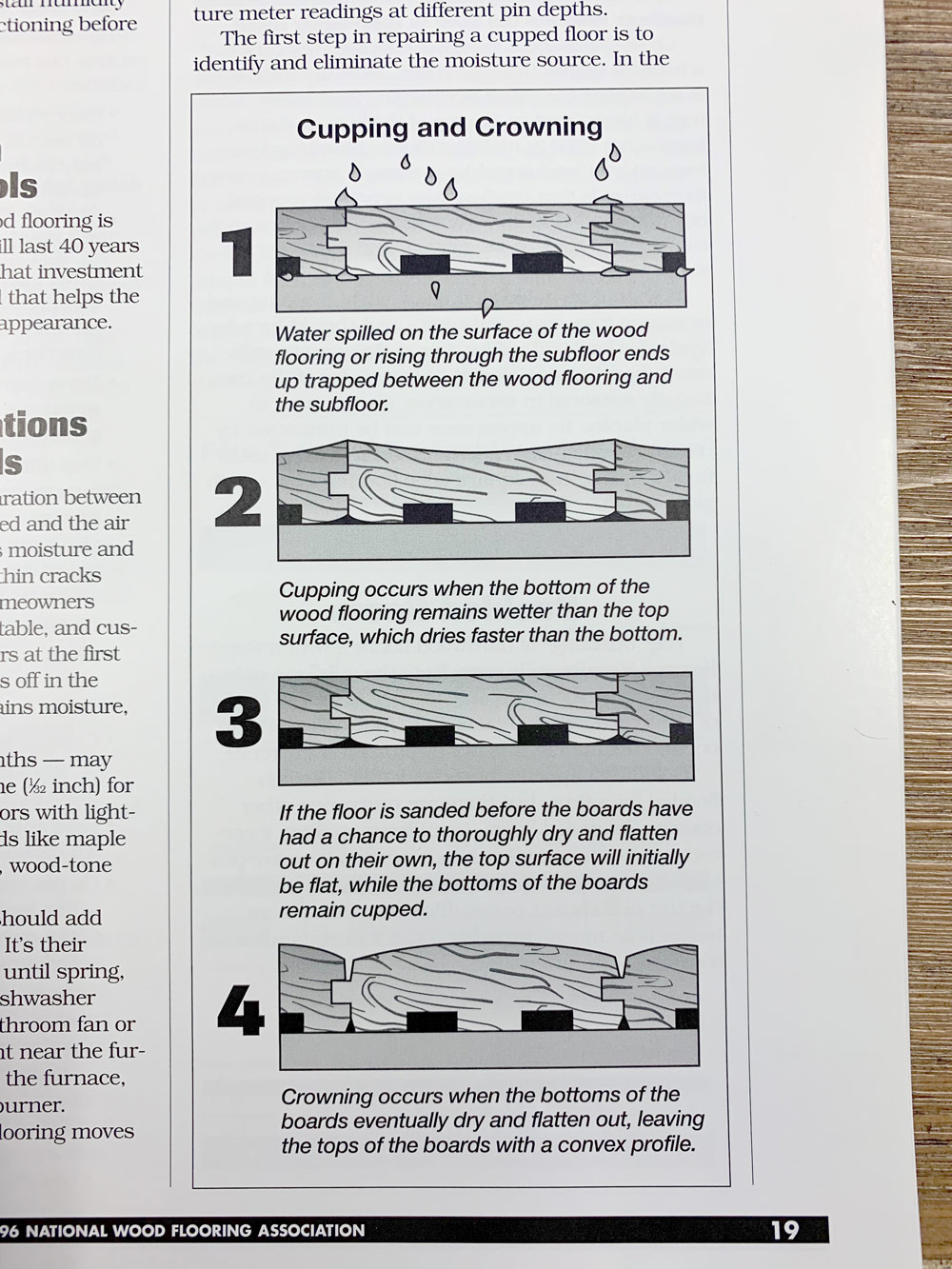
Image content copyright National Wood Flooring Association
When is the best time of year to install hardwood flooring?
While you can have hardwood flooring installed year-round in Utah, Autumn’s cooler temperatures are ideal for installing your new floor. However, it always helps if you do your best to balance your home’s humidity levels using a humidifier and dehumidifier, your family and floors will benefit in every season.
If you notice that you have gaps in your floor boards in the winter, this is a key sign that your home’s humidity could be further optimized. It is best to wait until spring to see if the gaps remain, reduce in size or close up.
Larger gaps in hardwood flooring that don’t close up in the summer time may be due to excessive moisture below the floor, so your flooring can be somewhat of a “canary in the coal mine” in revealing things like structural settlement and water-based issues that are not visible otherwise.
If you are considering to have a new hardwood floor installed in the Salt Lake City area, we recommend you discuss your project with a professional installer, who is located in Utah, who can provide you with specific advice around the best type of wood for your home and lifestyle and what will work best to minimize such issues as cracking and gapping in your floor boards in the future.
When Hardwood Flooring needs to be repaired
As with any type of flooring, your hardwood floor may require repairs over its lifetime. Similar to the best time to install your floor, repairing larger gaps and separations are best done in the shoulder seasons, such as April and October.
If you need help with hardwood flooring repairs or need a flooring addition, please contact us.
